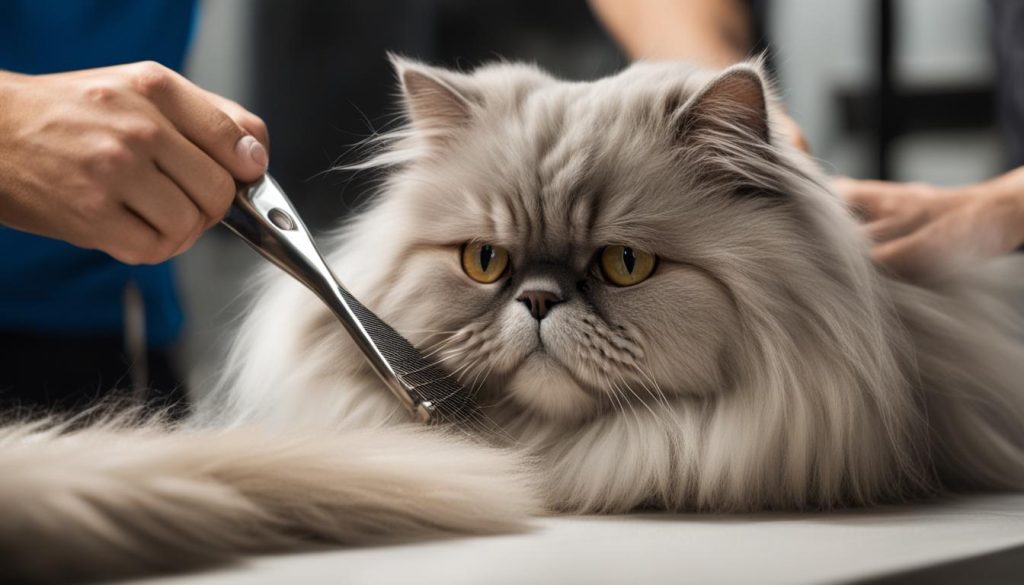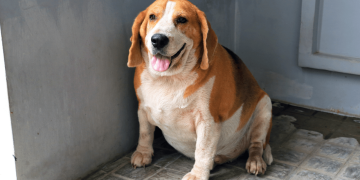Persian cats are one of the most iconic and beloved cat breeds worldwide. Known for their luxurious coats, round faces, and calm demeanor, Persian cats have captured the hearts of pet owners for generations. However, owning a Persian cat comes with its unique set of challenges and rewards, from grooming requirements to health concerns. If you are considering adopting a Persian cat or already have one, it’s essential to understand what makes this breed special and how to provide the best care for them.
In this article, we will explore everything you need to know about Persian cats, including their origin, characteristics, personality, health care, grooming needs, feeding habits, and more. Whether you’re a new cat owner or an experienced feline enthusiast, this guide will provide you with valuable insights into raising a happy and healthy Persian cat.
1. What Are Persian Cats and Where Did They Come From?
1.1. The History of Persian Cats
The Persian cat is one of the oldest and most recognized cat breeds. Originating in Persia (modern-day Iran), the Persian cat has a rich history that dates back over 2,000 years. The breed was introduced to Europe in the 1600s, where it gained popularity for its distinct appearance and calm temperament. Persian cats quickly became a favorite among royalty and aristocrats due to their beauty and regal demeanor.
- Ancient Beginnings: The Persian cat’s long, luxurious coat is believed to have evolved as a result of the colder climate in Persia, which helped protect them from the harsh weather conditions.
- European Popularity: In the 17th and 18th centuries, Persian cats made their way to Europe through trade routes. Queen Victoria of England was especially fond of them, helping to increase their popularity in Western society.
1.2. Persian Cat Characteristics
- Appearance: Persian cats are best known for their round faces, large eyes, and long, silky coats. Their dense fur, which comes in various colors and patterns, requires regular grooming to maintain its pristine appearance.
- Physical Traits: Persian cats are medium to large-sized cats with a sturdy, well-balanced body. They have a short, broad face, a flat nose, and a slightly rounded chin.
- Personality: Persian cats are generally calm, affectionate, and quiet. They are known for their gentle and sweet-natured temperament. Unlike more active breeds, they prefer lounging and relaxing but can still enjoy playtime with their owners.
2. What Is the Personality of a Persian Cat?
2.1. Calm and Laid-Back Temperament
Persian cats are generally known for their calm and laid-back nature. They tend to enjoy a quiet environment and prefer not to engage in high-energy play. This makes them great companions for people who live in calmer households or those who are looking for a relaxed feline friend.
- Low to Moderate Energy: While they may not be as playful as some other breeds, Persian cats enjoy moderate interactive play. They are not known to be overly curious or prone to exploring the house, but they do appreciate attention and affection.
- Affectionate: Persian cats are known for being affectionate toward their owners. They enjoy cuddling, and many Persian cats are content to rest in their owner’s lap for hours. However, they are not typically “lap cats” in the same way that some other breeds are; they prefer close, gentle affection.
- Independent but Social: While they enjoy companionship, Persian cats are also independent creatures. They do not demand constant attention, but they do form strong bonds with their human families.
2.2. Sociability and Compatibility
Persian cats tend to get along well with other pets, including other cats and even dogs, as long as they are introduced gradually. They are usually not aggressive and may even be passive in their interactions with other animals.
- Children: Persian cats are generally patient with children, although it’s important to teach children how to handle them gently. They prefer calm, respectful interactions and may not enjoy being handled roughly.
- Other Animals: Persian cats can coexist peacefully with other cats and even dogs if they are properly socialized from a young age. However, they may not tolerate overly boisterous animals.
3. What Are the Grooming Needs of Persian Cats?
One of the most distinctive features of Persian cats is their luxurious, long, and thick coat. While their fur is beautiful, it does require consistent grooming and maintenance. Persian cats are high-maintenance in terms of grooming, and it’s important to understand the time commitment required to keep their coats healthy.
3.1. Daily Grooming for Persian Cats
- Combing and Brushing: Persian cats require daily brushing to prevent their fur from matting. Use a wide-tooth comb or a brush specifically designed for long-haired cats to carefully detangle their fur. Be gentle when brushing to avoid causing discomfort.
- Dealing with Mats and Tangles: Mats and tangles are common in Persian cats, especially in areas where the fur is thick, such as behind the ears and under the legs. If mats form, carefully remove them with a mat comb or seek the help of a professional groomer.
3.2. Bathing Persian Cats
- How Often to Bathe: Persian cats don’t need frequent baths, but it’s recommended to bathe them every 4-6 weeks to keep their coats clean and shiny. Bathing helps remove dirt, oils, and tangles from the coat.
- Shampoo and Conditioner: Use a mild cat-friendly shampoo and conditioner to bathe your Persian cat. Avoid human shampoos, as they can irritate your cat’s skin.
- Drying: After the bath, dry your cat with a soft towel or blow-dry their coat using a pet-specific blow dryer set on low heat. Be gentle and make sure they are completely dry to prevent matting.
3.3. Eye Care for Persian Cats
Persian cats are prone to excessive tearing, which can cause eye stains. Regular cleaning of their eyes is important to prevent irritation and infection.
- Cleaning the Eyes: Use a soft, damp cloth or a specially designed eye wipe to gently wipe away any discharge from the corners of their eyes.
- Preventing Tear Stains: Some Persian cats may develop dark tear stains around their eyes. Regular cleaning and maintenance can help manage this, and in severe cases, your vet may recommend products to reduce staining.

4. What Are the Health Considerations for Persian Cats?
Persian cats are generally healthy, but like all purebred cats, they are prone to certain genetic health issues. As a responsible pet owner, it’s essential to be aware of these potential health concerns and take proactive steps to manage them.
4.1. Common Health Problems
- Brachycephalic Syndrome: Due to their flat faces, Persian cats are at a higher risk of brachycephalic airway syndrome, which can cause breathing difficulties. This can make it harder for them to regulate their body temperature, especially in hot weather.
- Management: Keep your Persian cat in a cool, well-ventilated area, and avoid excessive exertion, especially in the heat. If you notice any signs of difficulty breathing, consult your vet.
- Polycystic Kidney Disease (PKD): PKD is a genetic condition that affects the kidneys, causing cysts to form over time. This can lead to kidney failure if not managed.
- Management: Regular veterinary check-ups and early detection through ultrasound can help monitor kidney function. Some Persian cats may need a special diet to manage the condition.
- Dental Problems: Persian cats can be prone to dental issues, including gingivitis and periodontal disease, due to their short jaw structure.
- Management: Brush your Persian cat’s teeth regularly with a cat-specific toothpaste and provide dental treats or toys that can help keep their teeth clean.
4.2. Regular Vet Check-ups
Due to the breed’s susceptibility to certain health issues, regular veterinary visits are essential. An annual check-up, which includes blood tests, vaccinations, and a dental exam, can help catch health problems early and ensure your cat’s well-being.
- Vaccinations: Make sure your Persian cat stays up to date on vaccinations to protect them from diseases like feline leukemia and feline immunodeficiency virus.
- Parasite Control: Regular flea and tick prevention is important, as Persian cats are sometimes prone to infestations due to their dense coats.
5. What Should You Feed Your Persian Cat?
A balanced diet is key to maintaining your Persian cat’s health and energy levels. Persian cats are prone to obesity, so it’s important to monitor their food intake and provide a high-quality diet that meets their nutritional needs.
5.1. Diet Recommendations
- High-Quality Protein: Persian cats should be fed a diet rich in high-quality animal protein, which is essential for maintaining muscle mass and overall health.
- Portion Control: Because Persian cats are prone to obesity, it’s important to control portion sizes. Follow the recommended feeding guidelines on the cat food package or consult your vet for specific advice based on your cat’s age and activity level.
5.2. Wet vs. Dry Food
Both wet and dry food have benefits, and many cat owners choose to feed their Persian cats a combination of both. Wet food provides additional moisture, which helps prevent urinary tract issues, while dry food can help with dental health by reducing plaque buildup.
6. How Can You Provide the Best Living Environment for Your Persian Cat?
6.1. Creating a Comfortable Home
Persian cats thrive in calm, quiet environments. They appreciate a cozy, safe space to rest, as well as access to areas where they can observe their surroundings. Consider providing your cat with the following:
- Comfortable Bedding: A soft, warm bed in a quiet, low-traffic area is ideal for a Persian cat. Many Persian cats love to curl up in cozy spaces.
- Vertical Space: Providing scratching posts and cat trees allows your Persian cat to stretch, scratch, and climb, which helps keep them entertained and active.
6.2. Indoor Lifestyle
Persian cats are typically indoor cats, and it’s best to keep them indoors for their safety and well-being. Due to their long coats, they are more susceptible to parasites and injury if allowed outside.
7. Conclusion: Is a Persian Cat Right for You?
Persian cats are charming, affectionate, and beautiful companions, but they do require dedicated care and attention. If you are ready to commit to daily grooming, regular vet check-ups, and a controlled feeding regimen, a Persian cat can bring years of joy and companionship into your life.
By understanding the unique needs of Persian cats and being proactive in meeting those needs, you can provide your furry friend with a happy, healthy life. Whether you’re admiring their majestic coats, enjoying their quiet demeanor, or curling up for cuddles, a Persian cat can make a wonderful addition to any home.























































